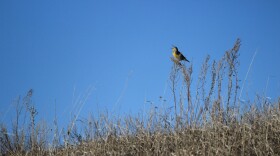You may want to check for clear skies the evenings of October 6-10. That is because the Draconids Meteor Shower will be putting on its annual show. It is not one of the better meteor showers, but if we have comfortable temperatures and the skies are clear, it is worth checking out.
Although the Draconids is not one of the better shows, with perhaps around ten meteors per hour, they are known to occasionally put on spectacular shows. For example, in 2011 over 600 meteors were observed. The peak viewing period will be on the early evening hours of October 7th. That is good timing. And we will have a new moon on the sixth, so the sky should be quite dark. Those are great conditions to watch a meteor show.
Not only do we have the Draconids to watch, but the Orionids Meteor Shower runs this year from October 2 to November 7. So it has already started. It is an average meteor shower, generally producing 20 or so meteors per hour during the peak viewing period which will come on the night of October 21 and early morning hours of October 22. However, a full moon on the 20th will make viewing less than optimal.
Meteors are sometimes referred to as falling stars, which they are not. They are pieces of comet material. Comets are mixtures of ice, rock, and dust. Think of them as dirty snowballs a few miles in diameter. When they pass near the sun, the heat causes the comet to shed ice and particles. These mostly sand-sized particles form a “debris field” in outer space. When the earth passes through these debris fields, the pieces collide with the atmosphere and become glowing hot. Viewed from earth, they are meteors or “falling stars.”
Meteor showers are named for the constellation from which they appear to originate. So the Draconids appear to radiate out of the constellation Draco while the Orionids appear to be radiating out of the constellation Orion. However, the meteors may be observed most anywhere in the night sky.
So take the time to occasionally check for meteors over the next few weeks. Hopefully we will have some good viewing opportunities.




